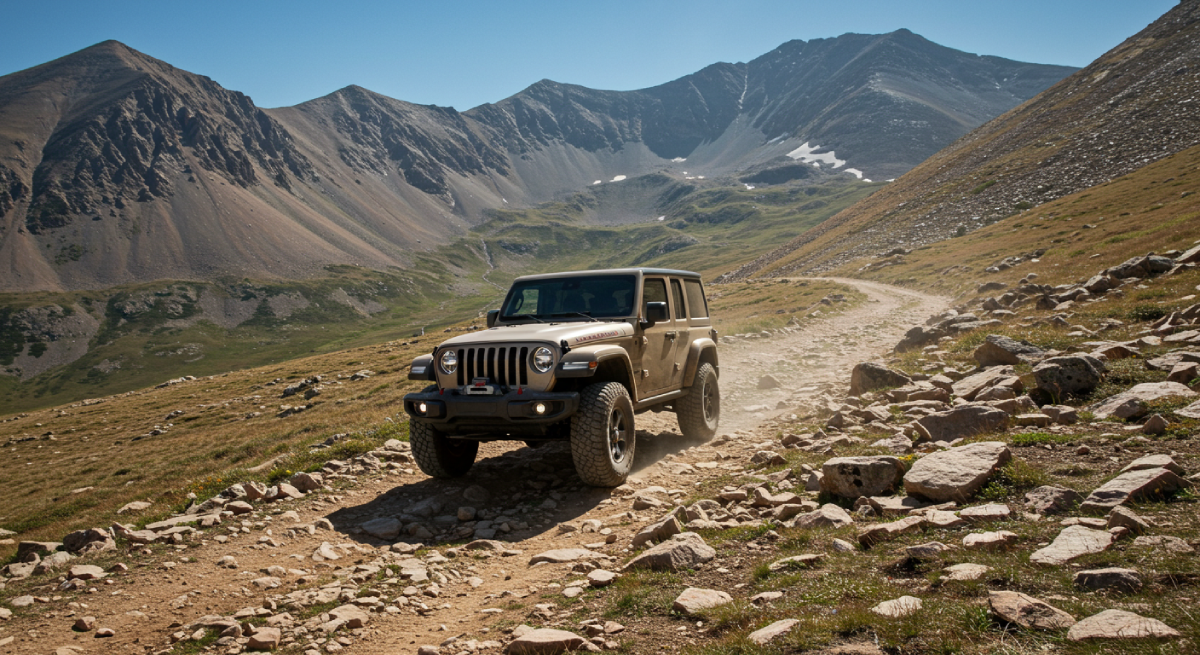
Engineer Pass Colorado: Complete Jeep Guide to Alpine Loop Adventure
Engineer Pass: Colorado's 12,800-Foot Reality Check That Separates Confident Drivers from Competent Ones
Here's what social media doesn't tell you about Engineer Pass: this isn't just another Colorado mountain crossing with dramatic views and a few challenging spots. At 12,800 feet above sea level, Engineer Pass represents one of the highest vehicle-accessible routes in North America, connecting Ouray and Lake City through terrain that has been humbling overconfident drivers and inadequately prepared vehicles for more than 140 years.
Engineer Pass climbs through the San Juan Mountains—Colorado's most technically demanding mountain range—where sustained steep grades, off-camber sections, and exposure that makes mistakes visible from miles away create driving challenges that exist nowhere else in the continental United States.
The elevation alone would make this route significant, but combined with technical terrain that demands precision and weather patterns that change from safe to deadly within minutes, Engineer Pass operates as a comprehensive examination of both driver skill and vehicle capability.

Most people experience less than 30% of what Engineer Pass actually offers because they turn around when the technical reality exceeds their optimistic self-assessment, attempt it in vehicles lacking adequate modifications, or arrive unprepared for atmospheric conditions that reduce both human and mechanical performance to levels that make completion impossible.
The difference between tourists who retreat when conditions get serious and adventurers who successfully cross this legendary pass comes down to honest preparation rather than hopeful determination.
Why Engineer Pass Earned Its Reputation as the San Juan Standard
Engineer Pass doesn't just challenge drivers—it filters them. The route serves as an excellent barometer of vehicle capability and driver skill before attempting more extreme San Juan challenges like Black Bear Pass or Cinnamon Pass.
Successfully completing Engineer Pass indicates genuine readiness for advanced Colorado high-altitude off-roading rather than just enthusiasm backed by expensive modifications that haven't been tested under real-world stress.
What makes Engineer Pass the San Juan measuring stick:
12,800-foot summit elevation creates atmospheric conditions that cripple unprepared vehicles
Sustained technical climbing demands competent driving over extended sections without recovery areas
Off-camber sections with significant exposure separate confident drivers from truly skilled ones
Weather exposure on Continental Divide terrain creates rapid transitions from safe to dangerous
Historical mining routes provide context for understanding Colorado's engineering challenges
Route difficulty filters casual tourists while remaining achievable for properly prepared adventurers
The brutal reality: Engineer Pass eliminates vehicles and drivers who aren't prepared for sustained technical difficulty at extreme altitude. Success here indicates readiness for other San Juan challenges, while failure provides expensive lessons about the difference between confidence and competence.
The Technical Reality of Extreme Altitude Performance
At 12,800 feet, Engineer Pass creates atmospheric conditions that affect every mechanical system and human capability in ways that lower-elevation driving never teaches.
The summit elevation places you above most North American peaks, in atmospheric pressure conditions where standard vehicle systems operate at the edge of their functional limits while human performance degrades significantly below sea-level baseline.
Mechanical Performance at 12,800 Feet
Engine power degradation at Engineer Pass summit:
Naturally aspirated engines: 38-42% power reduction compared to sea level output
Fuel efficiency: 25-30% decrease due to atmospheric pressure compensation
Cooling system stress: 50-60% increased heat generation during sustained climbs
Transmission temperatures: Critically elevated on extended technical grades
Why altitude effects compound technical challenges: The power loss that makes climbing difficult also reduces your ability to recover from poor line selection, while cooling system stress creates constant risk of overheating when technical obstacles demand repeated attempts or extended low-speed operation.
Turbocharged advantage at extreme altitude: Forced induction partially compensates for reduced atmospheric pressure, maintaining closer to 70-80% of sea-level power output when naturally aspirated engines struggle at 60% or less. This difference becomes critical when sustained technical climbing demands maximum available power.
Human Performance at Extreme Elevation
Sea-level residents experience significant performance degradation above 10,000 feet, with effects becoming pronounced at Engineer Pass elevation. The reduced oxygen content doesn't just cause discomfort—it affects cognitive function, reaction time, and decision-making capability when technical terrain demands peak performance and split-second judgment calls.
Altitude effects on driver capability:
Reaction time increases 25-30% compared to sea-level baseline performance
Decision-making becomes impaired when rapid adaptation to changing conditions is required
Physical coordination suffers when precise throttle and steering control determine success
Fatigue accumulates faster during extended technical sections requiring sustained concentration
Headaches, nausea, and dizziness can develop suddenly, affecting judgment when it matters most
The compounding problem: As altitude affects your physical and mental performance, the technical demands increase simultaneously, creating situations where degraded human capability meets challenges that require peak performance for safe navigation.
Weather Patterns That Transform Difficulty Levels
Engineer Pass weather operates on San Juan Mountain physics that create some of the most dramatic and rapid weather changes in North America.
The Continental Divide location and extreme elevation create convergence zones where weather systems collide, producing transitions from clear conditions to whiteout snow, lightning storms, or temperature drops exceeding 50 degrees within hours.
Seasonal Access Windows
Summer prime time (July-September): Optimal conditions for Engineer Pass attempts, though afternoon thunderstorms develop rapidly above treeline and create genuine lightning hazards on exposed summit sections. Morning starts before 8 AM provide the best weather stability before daily heating triggers storm development.
Fall challenge period (September-October): Early winter storms can close the pass with little warning, while dramatic temperature swings create ice on north-facing sections even when valleys remain comfortable. Weather monitoring becomes critical as seasonal transition accelerates and conditions become increasingly unpredictable.
Winter closure (November-June): Snow accumulation makes Engineer Pass completely impassable for standard vehicles, with drifts reaching depths that challenge even specialized snow removal equipment. Winter attempts require avalanche expertise and specialized equipment that recreational adventurers almost never possess.
Spring mud season (June-July): Snowmelt creates muddy conditions and stream crossings while patches of snow and ice remain at elevation, creating mixed surface conditions that require different techniques within the same route. Early season attempts face uncertainty about full route accessibility.
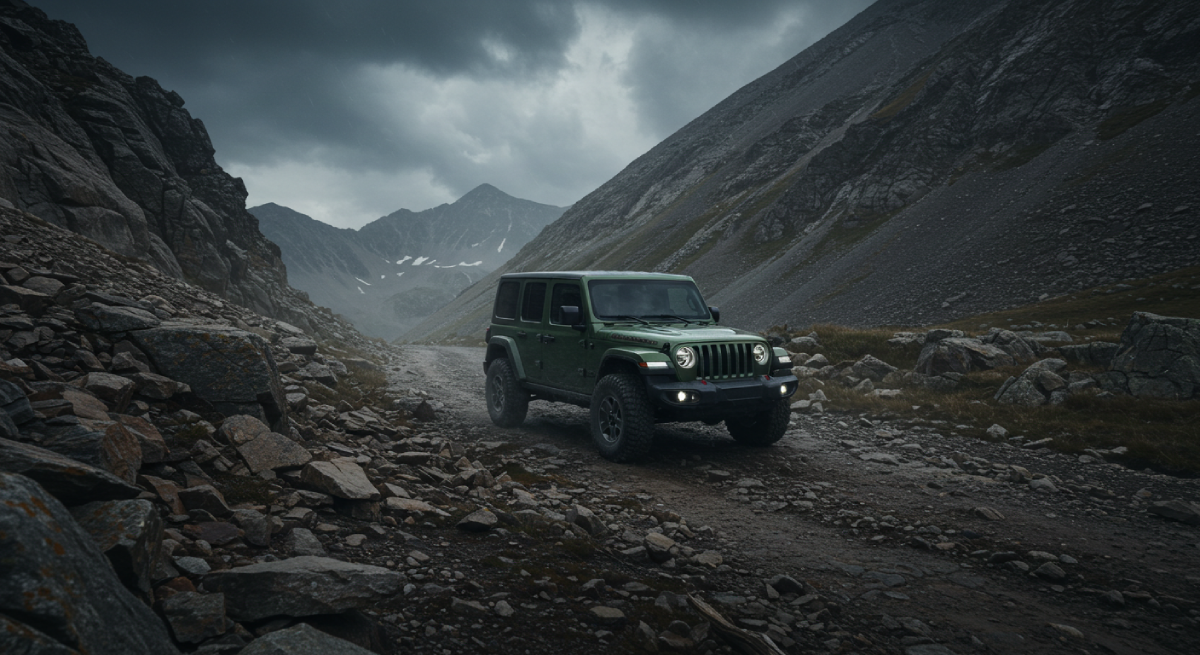
Daily Weather Progression
Morning stability (6 AM - 11 AM):
Calm atmospheric conditions with minimal convective activity that triggers storms
Clear visibility before afternoon cloud buildup obscures mountain views and creates hazards
Cooler temperatures that reduce overheating risks during sustained technical climbing
Minimal thunderstorm probability for safer route completion without lightning exposure
Afternoon deterioration (12 PM - 6 PM):
Rapid thunderstorm development creates deadly lightning exposure on exposed summit sections
Temperature variations that affect both vehicle performance and surface traction conditions
Increased wind speeds that complicate vehicle control on off-camber sections with exposure
Significantly higher probability of weather-related route closure or hazardous conditions
Technical Challenges That Define Engineer Pass
Engineer Pass combines every possible challenge into a single route: sustained steep grades that test power and cooling systems, off-camber sections that demand precise tire placement and nerve, rock gardens that require suspension articulation and careful navigation, and exposure that makes every mistake visible while limiting recovery options.
The Sustained Climbing Challenge
Unlike trails that combine difficult obstacles with flat recovery sections, Engineer Pass maintains sustained grades that prevent rest between challenging sections.
The continuous demand tests cooling systems already stressed by altitude, transmission durability under constant load, and driver endurance in ways that shorter technical challenges never approach.
Sustained grade management at altitude:
Maintain consistent speeds that balance forward momentum with cooling system demands
Use appropriate low-range gearing to reduce transmission stress and prevent engine lugging
Monitor temperature gauges continuously rather than responding reactively to overheating
Plan strategic stops at safer locations rather than emergency situations on exposed sections
Off-Camber Sections with Exposure
Miles of Engineer Pass contain off-camber sections where vehicles tilt at angles that test both driver nerve and vehicle stability.
These aren't gentle side-slopes—they're sustained sections where exposure makes mistakes catastrophically visible while loose surface conditions reduce traction exactly when precision matters most.
Off-camber navigation requirements:
Precise throttle control to maintain forward progress without breaking traction
Understanding of vehicle center of gravity and tipping angles under load
Passenger weight distribution awareness that affects stability on tilted sections
Psychological preparation for exposure that affects decision-making even with adequate skill
Rock Garden Technical Navigation
Engineer Pass contains extensive rock garden sections where wheel placement determines the difference between successful navigation and expensive undercarriage damage.
These sections require reading terrain for safe lines while maintaining momentum on grades that make stopping and restarting difficult at reduced power output.
Rock navigation strategies at altitude:
Pre-identify wheel placement before committing to specific lines through obstacles
Maintain steady throttle application to prevent wheel spin on loose surfaces between rocks
Use spotter assistance when visibility limitations prevent safe line identification
Understand vehicle dimensions and vulnerable points to avoid contact damage
Historical Significance That Adds Context
Engineer Pass preserves remnants of Colorado's mining era that provide educational context about why 19th-century engineers chose this challenging route and how they approached problems that still challenge modern 4x4 vehicles.
The historic structures, mining remnants, and engineering artifacts create exploration opportunities that combine technical driving with Colorado history education.
Mining Era Engineering Solutions
The miners and engineers who established this route understood that success at extreme altitude required different approaches than lower-elevation construction.
Their solutions—aggressive grades calculated to specific tolerances, strategic switchback placement, and careful route selection that followed natural terrain features—demonstrate engineering principles that remain relevant for contemporary adventurers.
Historical engineering lessons that still apply:
Multiple backup plans for equipment failure and extreme weather events
Conservative performance estimates that account for altitude effects on all systems
Supply logistics that accommodate isolation when weather prevents exit for days or weeks
Route selection based on sustainable grades rather than optimistic direct approaches
Ghost Town and Mining Remnants
The Capitol City ruins and mining sites along Engineer Pass provide historical context for understanding Colorado's mining boom while offering rest stops that break up sustained technical driving.
These sites demonstrate the determination and engineering capability required to establish operations at altitudes where human performance suffers and mechanical systems operate at the edge of functionality.
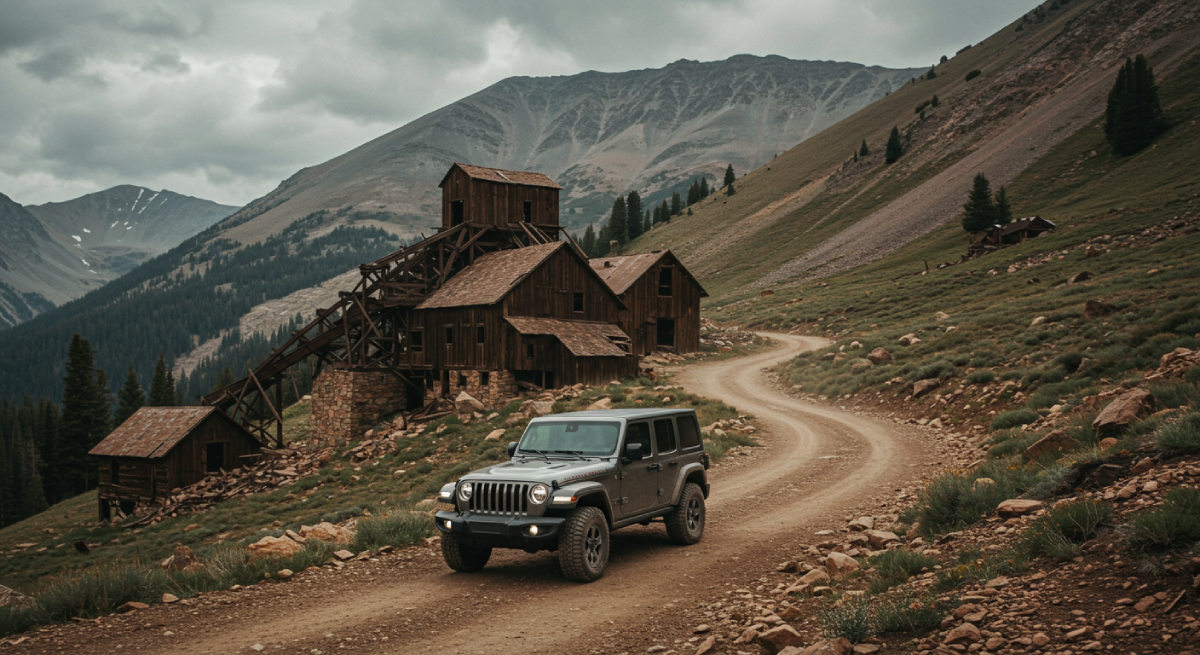
Vehicle Requirements for Engineer Pass Success
Engineer Pass demands specific vehicle capabilities that address extreme altitude performance degradation, sustained technical terrain, and emergency preparedness for remote high-elevation situations.
Understanding these requirements prevents the expensive mistakes and dangerous situations that result from attempting this route in inadequately modified vehicles.
Ground Clearance and Protection
Minimum clearance specifications:
10+ inches ground clearance measured at lowest point with full fuel and gear loads
Approach angles exceeding 35 degrees for ledge navigation and steep climb entry
Departure angles over 30 degrees to clear obstacles without rear contact damage
Comprehensive skid plate protection covering transmission, transfer case, fuel tank, and differentials
Why stock clearance proves inadequate: Engineer Pass contains rock obstacles, uneven surfaces, and technical features that exceed the ground clearance and approach angles that manufacturers design for highway comfort and suburban parking garage navigation.
High-Altitude Drivetrain Systems
Essential traction and power capabilities:
4-wheel drive with low-range transfer case providing 4:1 or lower gearing
Front and rear locking differentials for maintaining progress when individual wheels lose traction
Aggressive all-terrain tire compounds designed for mixed rock and dirt surfaces
Recovery equipment including winch, straps, and extraction gear positioned for remote self-rescue
Why all-wheel drive systems fail at altitude: AWD systems designed for winter highway driving lack the low-range gearing necessary for technical terrain at reduced power output, while their construction rarely withstands the sustained stress that Engineer Pass creates.
Cooling System Requirements
Extreme altitude creates cooling challenges that transform marginal systems into guaranteed failures. The reduced atmospheric pressure that decreases engine power simultaneously reduces cooling efficiency, creating conditions where overheating becomes likely rather than just possible during sustained climbing.
High-altitude cooling essentials:
Oversized radiator capacity with 30-40% greater cooling than stock specifications
Heavy-duty electric or mechanical fans designed to function in thin atmosphere
Transmission cooler rated for sustained mountain driving under load
Real-time temperature monitoring with early warning systems for proactive management
Why Professional Rental Services Make Sense for Engineer Pass
Attempting Engineer Pass in personal vehicles creates multiple complications that professional rental services eliminate: insurance limitations for extreme altitude off-road activities, significant modification costs for occasional use, and lack of current information about seasonal conditions and route variations that affect safety and completion probability.
Purpose-Built Fleet for Extreme Altitude
Cliffhanger Jeep Rentals operates vehicles designed specifically for San Juan Mountain challenges, with cooling system upgrades, appropriate gearing ratios, and protective modifications proven through countless successful Engineer Pass crossings rather than theoretical specifications that sound adequate but fail under real-world stress.
Fleet specifications for 12,800-foot challenges:
Enhanced cooling systems designed specifically for sustained high-altitude climbing
Low-range gearing ratios appropriate for technical terrain at 40% power reduction
Comprehensive armor protection based on actual damage patterns from this specific route
Emergency equipment including communication devices for areas without cell coverage
Local Expertise About Current Conditions
Real-time condition intelligence: Professional operations maintain current information about weather patterns, seasonal road conditions, and temporary hazards that aren't reflected in guidebooks or online resources that may be outdated or inaccurate for current situations.
Route optimization knowledge: Experienced guides understand alternate lines through technical sections, bypass options for the most challenging obstacles, and timing strategies that maximize success probability while minimizing weather-related risks.
Comprehensive Insurance and Emergency Support
Personal vehicle insurance typically excludes coverage for off-road activities above certain elevations, leaving owners fully responsible for recovery costs and repair expenses when Engineer Pass challenges exceed vehicle or driver capabilities—situations that occur far more frequently than optimistic planning assumes.
Professional service insurance advantages:
Coverage specifically designed for extreme altitude off-road activities
Emergency extraction services for situations that exceed self-recovery capabilities
Mechanical failure support in remote locations far from standard assistance
No personal financial exposure for damage that occurs during appropriate vehicle use
Planning Your Engineer Pass Adventure
Successful Engineer Pass crossings require planning approaches that account for extreme altitude effects, sustained technical demands, and weather variability that creates requirements different from casual mountain drives or lower-elevation off-road adventures.
Optimal Timing Strategy
Early season window (July-August): Recent snowmelt creates variable conditions with possible muddy sections, but weather generally remains most stable for crossing attempts. Route conditions improve as summer progresses though thunderstorm probability increases.
Peak season opportunity (August-September): Optimal road conditions with minimal mud and maximum route accessibility, though increased traffic creates dust and potential delays on single-lane sections where passing requires coordination.
Late season challenge (September-October): Weather becomes increasingly unpredictable with early winter storm potential that can close the route suddenly, while autumn colors provide spectacular scenery for successful attempts before seasonal closure.
Group Composition and Size
Optimal group configuration: 2-3 vehicles provide safety redundancy for mechanical failures or recovery situations without creating coordination challenges that larger groups experience on technical sections where communication becomes difficult.
Required experience distribution: At least one team member must have high-altitude driving experience and understanding of mountain weather patterns that affect safety decisions and route timing for successful completion.
Emergency Preparedness for Extreme Altitude
Essential communication systems: Cell service is completely unreliable on most of Engineer Pass, making satellite communication devices mandatory rather than optional for groups venturing into remote terrain where assistance isn't available for hours or days.
Self-sufficiency requirements for 12,800 feet:
Navigation systems with offline mapping for GPS signal loss in canyon sections
Emergency shelter rated for below-freezing temperatures that can occur even in summer
Water supplies exceeding planned duration by 200% to account for altitude dehydration
First aid training and supplies appropriate for high-altitude medical emergencies
Mechanical repair tools and spare parts for common failure points under stress
Environmental Responsibility at Extreme Altitude
Engineer Pass crosses sensitive alpine tundra environments where inappropriate use creates damage requiring decades or centuries for recovery due to extreme growing conditions and short seasons that limit vegetation regrowth.
Responsible recreation practices preserve access while protecting fragile ecosystems that exist only above treeline in Colorado's highest mountains.
Alpine Tundra Protection
Critical protection priorities:
Stay on designated routes to prevent tundra damage that persists for 50+ years
Pack out absolutely all waste including food scraps and gray water
Never camp above treeline where vegetation recovery is measured in decades
Minimize noise impacts during critical wildlife seasons when animals are most vulnerable
Supporting Long-Term Access
Engineer Pass requires ongoing maintenance funded by user fees and volunteer support from responsible recreation communities. Supporting trail maintenance organizations and complying with user fee requirements helps preserve access while funding infrastructure that makes safe passage possible for future adventurers.
The Reality of Engineer Pass Success
Engineer Pass rewards thorough preparation while punishing overconfidence and inadequate equipment with immediate feedback about the difference between adequate preparation and hopeful improvisation.
Success requires understanding that this route demands respect for forces—altitude, weather, terrain—that operate on physical principles unaffected by determination or modern technology.
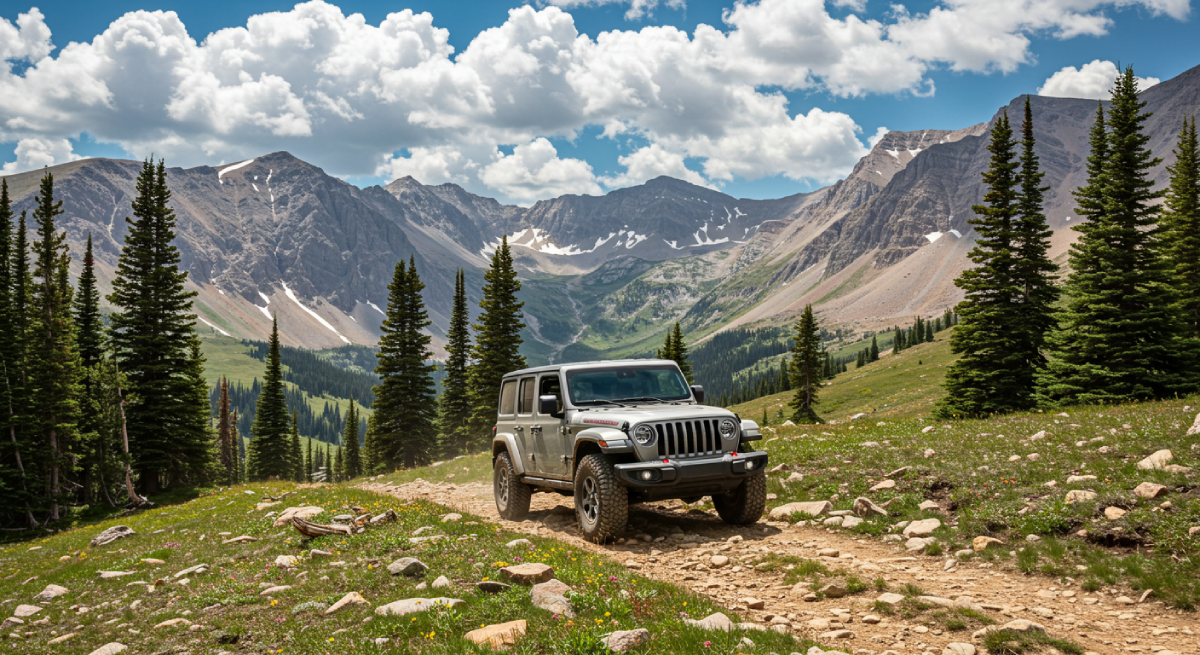
What successful crossing actually requires:
Vehicle modifications addressing specific extreme altitude performance demands
Weather monitoring and flexible scheduling that accommodates rapid condition changes
Emergency preparedness appropriate for situations that exceed planned parameters
Driver skills developed through progressive challenges rather than optimistic assumptions
Environmental awareness that preserves access through responsible recreation practices
Making the Commitment to Engineer Pass
Engineer Pass represents more than another mountain crossing—it's a benchmark that separates recreational off-roading from serious high-altitude adventure.
The route tests modern capabilities against challenges that have defeated countless attempts over more than a century, providing genuine examination of both preparation and execution at altitudes where mistakes carry expensive consequences.
Building toward Engineer Pass readiness:
Progressive high-altitude experience that develops understanding of equipment limitations
Technical driving skills refined through increasingly challenging terrain
Vehicle preparation addressing specific requirements rather than generic modifications
Weather awareness appropriate for Continental Divide conditions at extreme altitude
Emergency response training for remote high-elevation situations
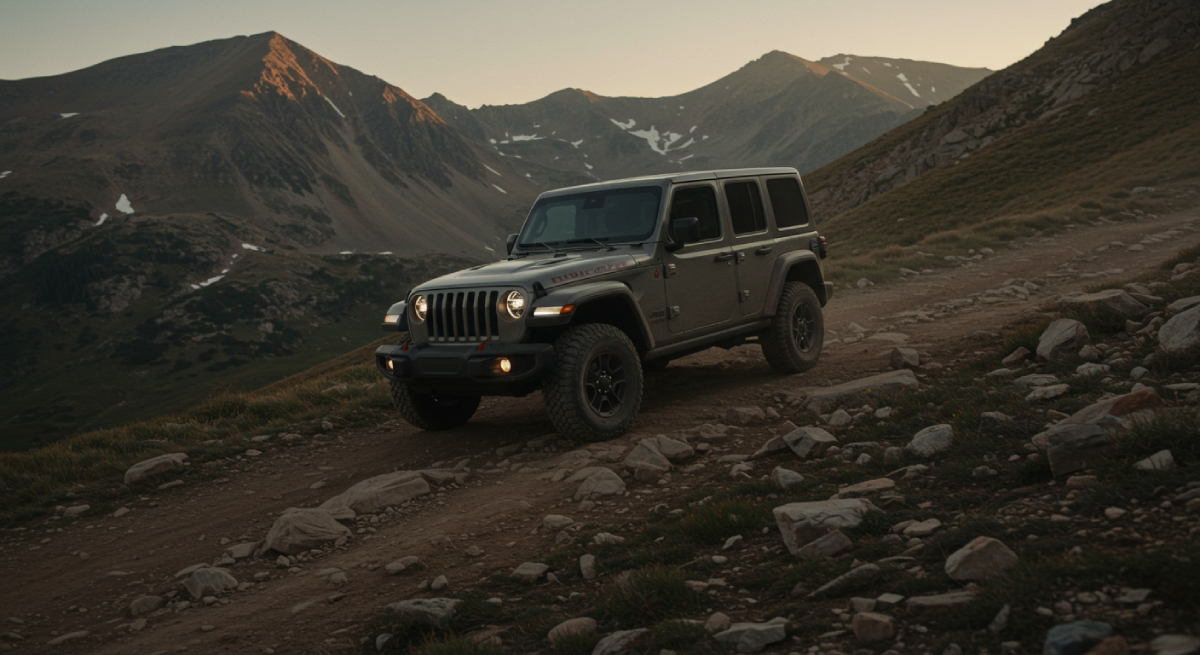
The Professional Advantage: Cliffhanger Jeep Rentals
The choice between attempting Engineer Pass in personal vehicles versus partnering with professional services often determines whether the experience becomes a successful achievement or an expensive lesson about the difference between confidence and competence at 12,800 feet above sea level.
Professional service advantages:
Purpose-built vehicles with proven extreme altitude modification combinations
Local expertise about current conditions and optimal timing strategies for success
Comprehensive insurance coverage designed for high-altitude off-road activities
Emergency support capabilities when situations exceed planned parameters
No long-term ownership costs for specialized equipment used occasionally
The Bottom Line: Earning Your Engineer Pass Crossing
Engineer Pass doesn't care about your vehicle modifications, driving resume, or determination level. It presents challenges that demand specific solutions while providing immediate feedback about the difference between adequate preparation and optimistic hope at altitudes where both human and mechanical systems operate at the edge of their functional capabilities.
The atmospheric and geological forces that created these challenges continue operating according to physical laws that make this route genuinely difficult rather than just scenically impressive.
Whether you choose to develop personal capabilities for this benchmark crossing or partner with professional services providing proven equipment and expertise, success depends on respecting these forces rather than assuming modern technology automatically overcomes them.
The most rewarding Engineer Pass experiences come from meeting its legendary challenges through competent preparation rather than discovering the difference between confidence and competence through expensive recovery situations at 12,800 feet above sea level.
Ready to cross Colorado's benchmark high-altitude pass? Cliffhanger Jeep Rentals provides the specialized vehicles, extreme altitude expertise, and safety support that transform Engineer Pass from a daunting challenge into a successful achievement that proves your readiness for the San Juan Mountains' most demanding terrain.
Experience Engineer Pass with confidence through Cliffhanger Jeep Rentals—where every vehicle is prepared for challenges that separate proven capability from expensive overconfidence at extreme altitude.
